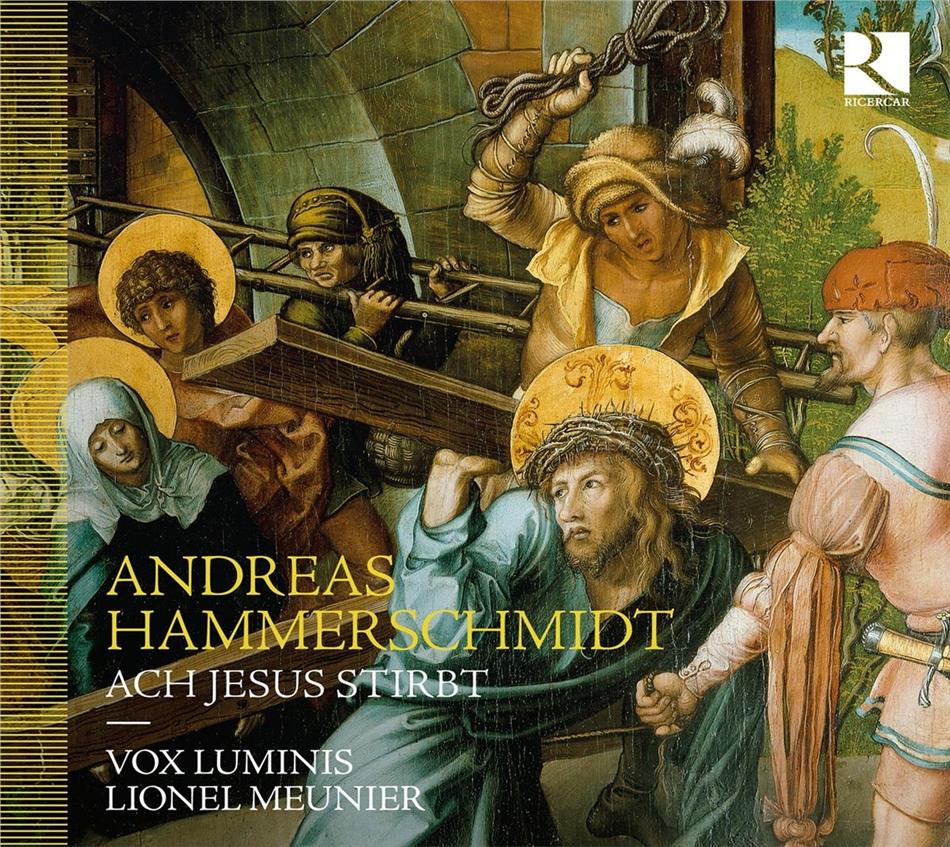Ach Jesus stirbt
Andreas Hammerschmidt
Vox Luminis, Clematis, Lionel Meunier
Outhere/Ricercar, RIC418. 70’27

The ever-excellent Vox Luminis strike again with this magnificent recording of vocal works by the little-known Bohemian organist-composer Andreas Hammerschmidt (1612-1675). As a result of the Thirty Years War, his (Protestant) family moved to the important city of Freiberg in Saxony when he was about 15, where he became organist at the Petrikirche. In 1639 he moved to Zittau where he stayed until his death as organist of the Johanneskirche. Despite the ravages of the war, he became famed as an organist and a composer of music in the concertato tradition of Heinrich Schütz.
Unfortunately none of organ music has survived, although there are many published volumes of other music, including fifteen volumes of sacred music, three of secular vocal music and three of instrumental music. Vox Luminis have sensibly chosen a selection from the thirty-year span of his sacred vocal works (1639-1671) demonstrating the impressive range of his composing styles. The chosen pieces are all based on the liturgical period from Good Friday to Ascension Day.
As well as works just with continuo, there are several with an accompaniment of two trumpets and three trombones and three with the added strings of Clematis. As with their earlier Bach Family recording, it was recorded in Notre-Dame de la Nativité, Gedinne, with its impressive 2002 Thomas organ. The use of a full-size church organ rather than a weedy little continue organ makes an enormous difference to the sound (not least in the use of a full-length 8′ Principal stop as continuo), as well as being far closer to the manner of the original performances which would almost certainly used the main church organ as accompaniment. The organ also adds considerable oomph to the more powerfull sections, as well as adding 16′ continuo tone, with Bart Jacobs providing very effective and imaginative continuo realisations.
The varied style of the pieces is in the tradition of Lutheran polyphony, although with a clear influence from the Italian Baroque. The mood ranges from simple voice and continue to the grandeur of, for example, the exhiberent Ich fahre auf zu meinem Vater. The concluding triple-choir Siehe, wie fein und lieblich ists has some delightful double echoes.
Vox Luminis are on their usual outstanding form, with an extraordinary sense of consort and purity of intonation. I hope the nature of this recording as an anthology won’t put them off recording more of Hammerschmidt’s music.
- Ah Jesus stirbt
- O barmherziger Vater
- Warum betrübst du dich, mein
- Ach Gott, warum hast du mein vergessen
- Erbarm dich mein
- Bis hin an des Creutzes Stamm
- Christ lag in Todesbanden
- Vater unser
- Ich bin gewiß, das weder Tod
- Triumph, Triumph, Victoria
- Die mit Tränen säen
- Wer wälzet uns den Stein
- Ist nicht Ephraim mein theurer Sohn
- Ich fahre auf zu meinem Vater
- Siehe, wie fein und lieblich ists
